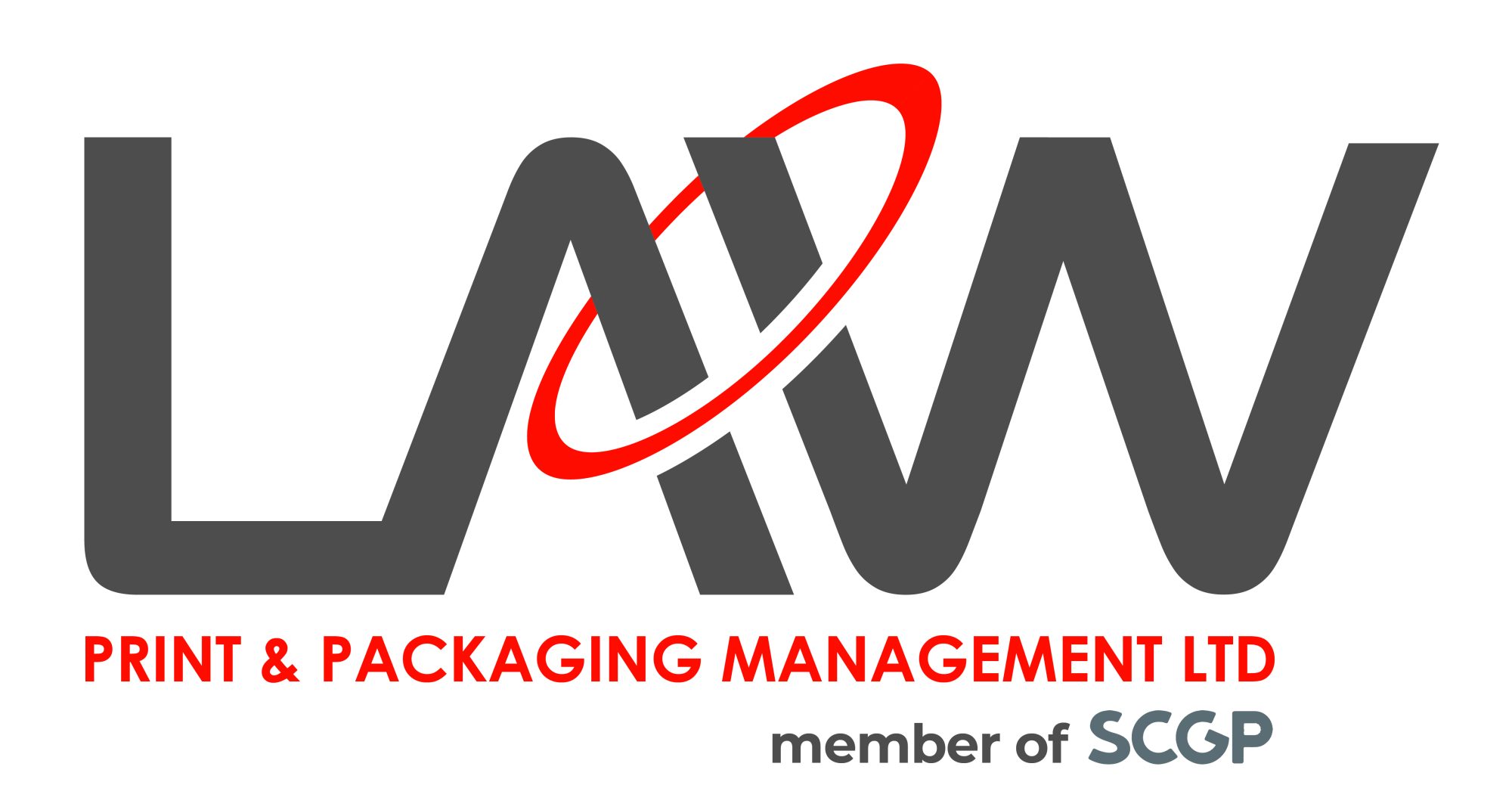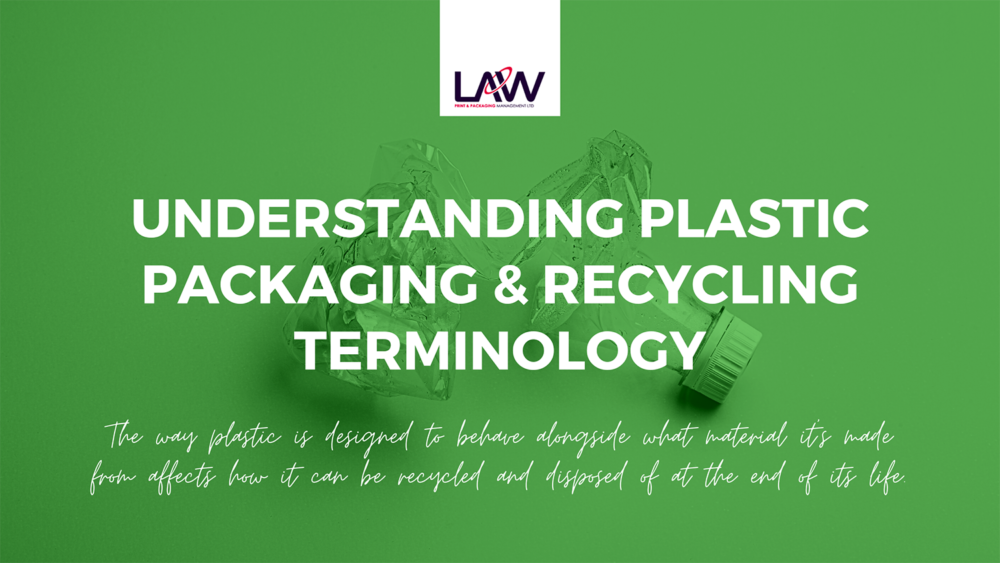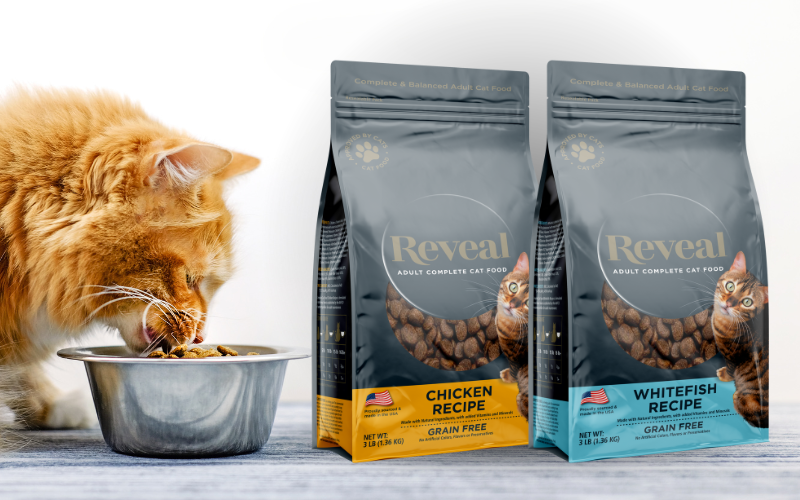The way plastic is designed to behave, alongside what material it’s made from, affects what it can be used for, as well as how it can be recycled and disposed of at the end of its life.
Understanding the terms that we use to describe plastics is essential to ensure that the right materials are used in the right applications, and so that all plastics are recycled in the best way possible and pollution of the environment is minimised.
At Law Print, we’re seeing a lot of misconceptions about recycling across the industry and this blog is to look at the types of recycling available. It’s also to show what we can do to help you as a business or a brand looking to become more sustainable in your operations, without all the noise surrounding it stopping you from making the right decision.
When it comes to plastic packaging terminology, we can help decipher the terms used by suppliers and other experts in the industry.
What materials does Law Print provide that can be recycled?
PE/PE is used for a variety of different applications. For us, this takes the form of pet food bags mostly but extends to all manner of different industries such as confectionery, beauty, sports nutrition and non-food items.
BOPP Woven is used for pet food but can be used for building and gardening products too, including aggregates and seeds.
Paper is a more traditional material, primarily used for flour, sugar, pasta, rice, sweets, coffee and much more.
When it comes to the recyclability of a bag, it’s important to remember that some paper bags must be lined with a plastic inner layer to protect the content, meaning that it is in fact not recyclable as such. They can be industrially composted at best. Manufacturers must state this on their packaging. We can help with this aspect of packaging if needed.
There are three rules to remember when your users are recycling:
- Recycle clean packaging like bottles, cans, paper and cardboard boxes
- Keep food and liquid out of your recycling
- No loose plastic bags and no bagged recyclables
Educating your customers in these rules and using the correct terminology and recycling logos will ensure they know you’re serious about sustainability and will add an element of aftercare to your service, so customers know they can talk to you about their concerns about recycling your packaging if any.
What plastic packaging terminology is used in recycling and what does it mean?
Biodegradable
A product that can be broken down by microorganisms (bacteria or fungi) into the water, naturally occurring gases like carbon dioxide (CO2) and methane (CH4) and biomass. Biodegradability depends strongly on environmental conditions: temperature, presence of microorganisms, presence of oxygen and water.
Compostable
Compostable materials are materials that break down at composting conditions. Industrial composting conditions require elevated temperature (55-60°C) combined with high relative humidity and the presence of oxygen, and they are in fact the most optimal compared to other everyday biodegradation conditions: in soil, surface water and marine water. Compliance with EN 13432 is considered a good measure for the industrial compostability of packaging materials.
Recyclable
Recycling is the process of converting waste materials into new materials and objects. The recovery of energy from waste materials is often included in this concept. The recyclability of a material depends on its ability to reacquire the properties it had in its original state. It is an alternative to “conventional” waste disposal that can save material and help lower greenhouse gas emissions. Recycling can prevent the waste of potentially useful materials and reduce the consumption of fresh raw materials, thereby reducing: energy usage, air pollution (from incineration) and water pollution (from landfilling).
What is the OPRL (On Pack Recycling Label)?
The OPRL scheme aims to deliver a simple, consistent and UK-wide recycling message on the retailer and brand packaging – whatever your sector – to help consumers reuse and recycle more material correctly, more often. That simple consistent message is now recognised by more than 3 in 4 consumers, with over 600 members now using it.
The latest changes to Flexible Packaging guidelines are here but here’s a quick summary:
OPRL is amending its Labelling Rules to include polypropylene (PP) films from 1 January 2022. This move will bring PP flexible packaging into line with PE films, significantly broadening the range of soft packaging consumers can recycle in front of the store. Work is in hand to establish the availability of processing capacity and functioning markets for metallised crisp, snack and chocolate wrappers, also covered by some of the new in-store collections networks, in the hope that these too can be labelled as recyclable in the near future.
Major retailers and specialist chains in the UK do follow the OPRL guidelines, so if you are a brand owner wanting to be listed in their stores, you would certainly seek to align your packaging needs to their requirements wherever possible.
Law Print has helped a large number of customers transitioning to more sustainable packaging in the last 2 years and the retailers’ preference is currently given to plastic mono material packaging solutions, such as PE/PE laminated bags and pouches or BOPP woven bags, which are fully recyclable. With our Ready2Recycle range, we aim to contribute to a more circular economony by protecting your products the most, using ressources the least.
Need more advice on plastic packaging terminology? We can help. If your brand is looking to invest in quality packaging, we will guide you through the entire print process. Providing recommendations along the way to improve efficiency, reduce costs and add untold value to the end product.
Contact us on +44 (0) 161 440 7302 or follow this link to complete our contact form.
CASE STUDIES | CONTACT US | SOCIAL MEDIA | NEWSLETTER


